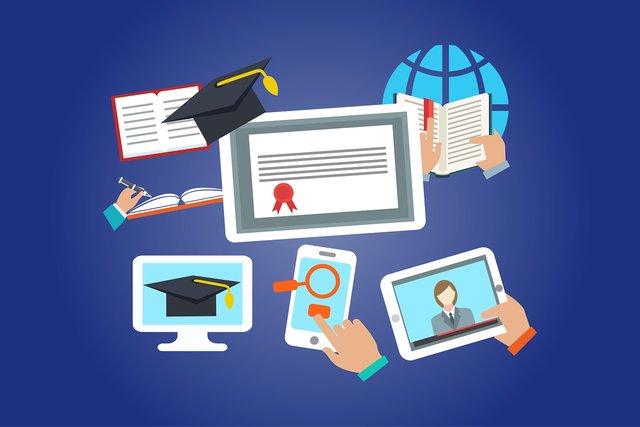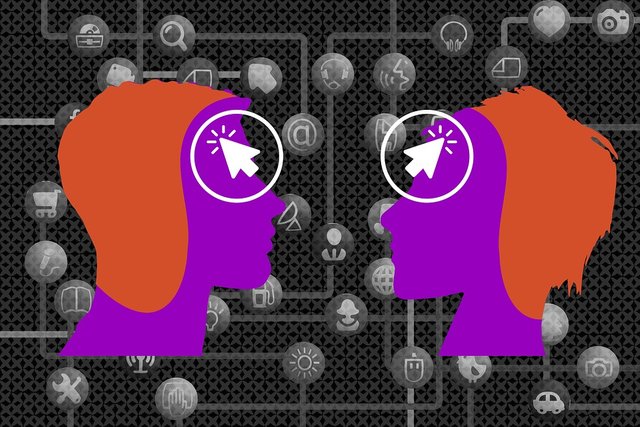MULTIMEDIA ELEMENTS IN TEACHING AND INSTRUCTION

With the kind of world that has today, multimedia is everywhere. When you pull up your phone and browse news feeds, a well-crafted advertisement that will most likely capture your attention will certainly pop-up any second, while your swiping and scrolling down your social media app. It’s a no-brainer why every social media platform or major search engine is flooded with all kinds of advertisement created using a combination of texts, images, audios and videos with one obvious reason, to capture your attention and convince you to tap or click on it. Of course, business CEO’s knows the wisdom of multimedia. And the use of multimedia has been very effective to skyrocket sales of big businesses.

In education, multimedia is probably often times being taken for granted but it is a powerful tool that will promote learning, it is key for a better learning experience. Our brain is the one that processes information but before the information gets into it it has to go through with our senses. The sense of sight, hearing, touch etc., this is where multimedia becomes the game changer when it comes to education. A well-designed illustration can quickly convey a very complex concept to a learner compare to hearing it someone explains the entire concepts. It is important to note however that multimedia is not just about how cool an animation or motion graphics is and how colorful the material is, there are also underlying principles where multimedia must be designed in such a way based on how our mind works. If you used too much graphics and texts, there is a chance that your multimedia material will overwhelm the learners. So we also have to be careful on the way we craft our multimedia materials in such a way that it will not distract learners by putting non-essential elements such as too much text or images or even unnecessary animations. Our goal is to reinforce learning, we carefully select and create eye-catching graphics that will stimulate learners mind and keep them engaged during the class/training session.
WHAT ARE THE DIFFERENT ELEMENTS OF MULTIMEDIA AND ITS USES IN EDUCATION?

- Text - in graphics design lots of techniques such as adjusting the spaces between letters, wordplay, font size, colors, and shadows are being applied to make a simple text more appealing to observers.
The text is the most commonly used in teaching and training, nowadays you can still see instructors and trainers using whiteboards, and in most government schools the traditional blackboards, use of letter-cutting, however, is now less due to the availability of computers and laptops where teachers uses powerpoint slides in presenting information in text format. A well-formatted text can retain more attention from learners.
- Graphics - refers to images both in electronic or printed form. Electronic graphics are sometimes in raster-based or vector-based format. Raster-based graphics which is being measured in pixels or the smallest unit area that illuminates on your screen that we actually perceive as the smallest square dots on our computer screen. Graphics that are rasterized usually pixelate when we zoomed them in while vector-based graphics retains its quality even if you scale them up or down. Image format comes in a variety of format but.JPEG, JPG, PNG, BITMAPS are the most common. Printed graphics are usually measured in dot per inch and the image output will depend on the quality of your printer. Dot per Inch measurement refers to the individual dots that can fit within the span of 1 inch of the printer output.
Graphic elements are also commonly used by educators in their electronic presentations.
- Audio - The most common audio format perhaps is an MP3 file, but there are many. Some commonly known file types are .wmv, .wav, .wma, and .ogg. A good audio quality has a huge impact on making presentations.
Speech and language training are areas where audios are most commonly used.
- Animation including 2D and 3D - A graphic in motion, obviously this type of multimedia almost belong to the entertainment and advertisement world. Its entertainment factor can be used to keep learners engage during the delivery of any content.
Imagine how interesting it is for the student to see a 3D animating model of a DNA on a widescreen television rather just seeing a picture of it on a textbook. There are only a few teachers who are really skilled and is able to create their own 2Ds and 3Ds for illustration purposes in the classroom there are however online resources where teachers can download for classroom use.
- Video - Today video is everything, that’s why youtube becomes a billion dollar platform, even Facebook has put a dedicated video tab/icon as an additional feature of their app. A video comes in different format .MP4 is one of the most commonly known file types.
Youtube is now commonly used in teaching and training, you can find easily videos as one of the materials in a lesson plan today. While youtube algorithm is based on views and trend, careful research will allow you to find well-organized learning resources from this site coming from youtube enthusiasts.
- Virtually Reality - This is perhaps the most immersive types of multimedia because it can simulate almost an entire reality of mind perception. Wearing a VR will not only allow you to see text, graphics, audios, and videos but the technology allows the simulation and manipulation of a surrounding environment allowing more brain stimulation of whatever it is in the content. Even balance and depth brain perception making the user feel being in another reality makes the VR the most brain stimulating type of multimedia.
VR Technology is one of the most promising tools that can elevate learning experience into a whole new level.
MULTIMEDIA TECHNOLOGY IN EDUCATION
If we really mean business we have to go all in promoting multimedia in education just like how serious the big businesses out there. It is not enough for teachers to rely on videos that they can download online. School should start developing multimedia projects. They must consider acquiring the hardware and software necessary for multimedia production for instructional purposes so that the product is more relevant and more localized to learners. Aside from the technology, it is also equally important to hire talents and experts in the field and to provide teacher training.
Having a multimedia technology for me is as vital as having a computer laboratory in the institution. After all the education department is supposed to be leading not just in academics but in technology as well.

Vote: @surpassinggoogle, @steemgigs, @deveerei, @bayanihan, @rcarter , @curie , @blocktrades , @neoxian , @liondani , @precise @pharesim , @good-karma , @roelandp , @jerrybanfield , @neoxian, @arcange and @adsactly
Love that one!
Posted using Partiko Android
Thanks for the appreciation.
I have a Google VR and it's really cool how it feels like you're in a different world!
Posted using Partiko Android
Right. VR now is already amazing for me even though it's having a hard time competing with game consoles when it comes to entertainment. but i'd love to see its improvement for the next few years where it will have more controls and sensors that it will deceive the mind comparing what is reality and what is virtual.